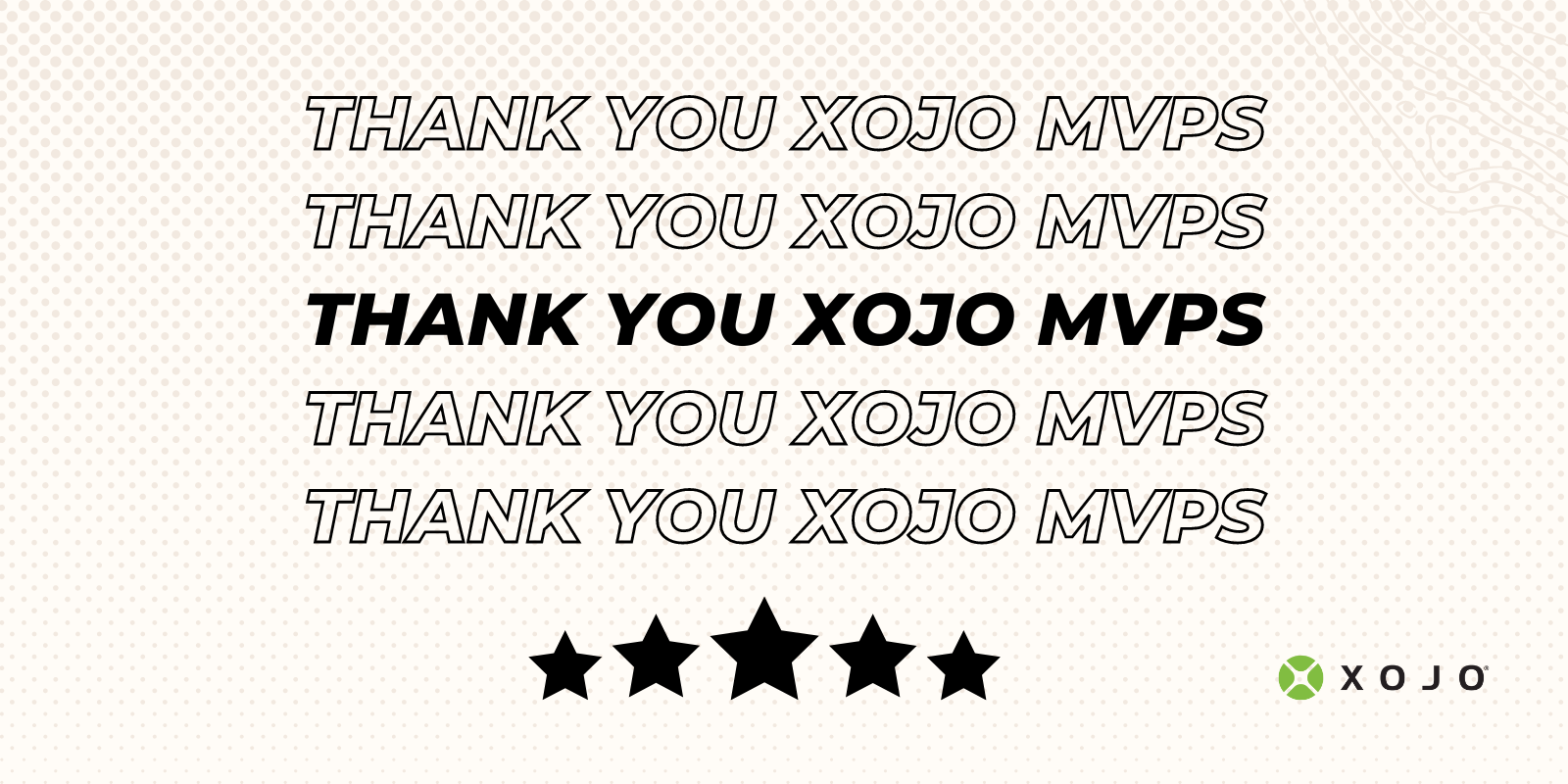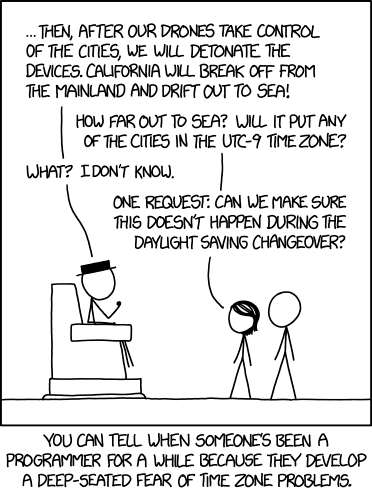It’s been too long since we last recognized the enormous amount of valuable assistance that the Xojo MVPs provide to Xojo and the community. We are so grateful to have such an amazing group of dedicated, passionate Xojo experts with so much Xojo knowledge. You may occasionally see MVPs on the forum, but much of their help is behind-the-scenes and some of what they have helped us with just might surprise you.
Comments closedTag: Xojo Framework
Does anyone else feel like 2022 is the first year in many years where we have gotten back together, in-person, for big events, small get-togethers, travel and even the daily office grind? Whether that is the right thing to have done or not, it seems that is what many of us did in 2022. Though we all tried new things to stay connected over the past few years (Zoom-fatigue anyone?), there’s nothing like seeing an old friend after years apart.
Comments closedAt Xojo we did the hard work of creating a framework with an API that manages the nuances, intricacies, and subtle yet important differences between 7 different platforms (macOS, Windows, Linux, web, Raspberry Pi, iOS and soon, Android) so you can focus on what makes your application unique. We have been doing it for over 20 years.
Comments closedIn many of our development projects, if not all, we are confronted with situations when we need to test our classes before the final deployment of a project. I’m not talking about Unit Testing here, though I highly recommend the excellent session on that topic from XDC 2018.
For example, it would not be desirable to send hundreds of emails to all the entries in a database simply to test one of the workflow steps or to verify that emails are being delivered as expected. It would be a lot simpler, and less disruptive to those using your app, to test using a few email addresses that are under your control.
So let’s establish a mechanism that allows us tell our apps when to run in a “simulated” mode vs. a “real” mode for all or some of the components that we need to test along the development cycle.
Comments closedSome of the most interesting web services you can use with Xojo through remote API calls are related to Artificial Intelligence. There are many different APIs provided by the main players in the AI sector, but IBM’s Watson is by far the most well known.
I’m going to show you how to connect to IBM’s Watson services with REST APIs and how to use them with Xojo projects to identify images. This is just one example, of course, of the many ways to utilize Watson and AI in your Xojo apps.
Comments closedWhether you are using Xojo to create your very first application or if you are coming from other languages, like C# or VisualBasic, customized UI controls are probably one of those things you have in your to-do list. For multiplatform Desktop apps, you will find that the Canvas class offers everything you need. In order to show you how easy it can be, follow this tutorial to recreate the ImageWell UI class control, provided by default in the Xojo framework. Our customized ImageWell will be able to proportionally display any JPEG file dropped by the user on the control, centering it on the available surface.
Comments closedYou can call into Win32 APIs (aka WinAPI) to use methods and properties that are not built into the framework by using the Declare command. To create a Declare statement you first need to track down the API you want to use using Microsoft’s documentation: Microsoft Developer Documentation.
Comments closedYou can call into Cocoa APIs to use methods and properties that are not built into the Xojo framework by using the Declare command. To create a Declare statement you first need to track down the API you want to use using Apple’s documentation: Apple Developer Documentation.
Comments closedGeoff just wrapped up the Keynote at this year’s XDC here in beautiful Denver, Colorado. The stately ballroom at the Magnolia Hotel was packed. After…
Comments closedTime zones can cause confusion even for super villains. But the Xojo framework has got you covered, whether you are out to do good or evil.
Comments closed



